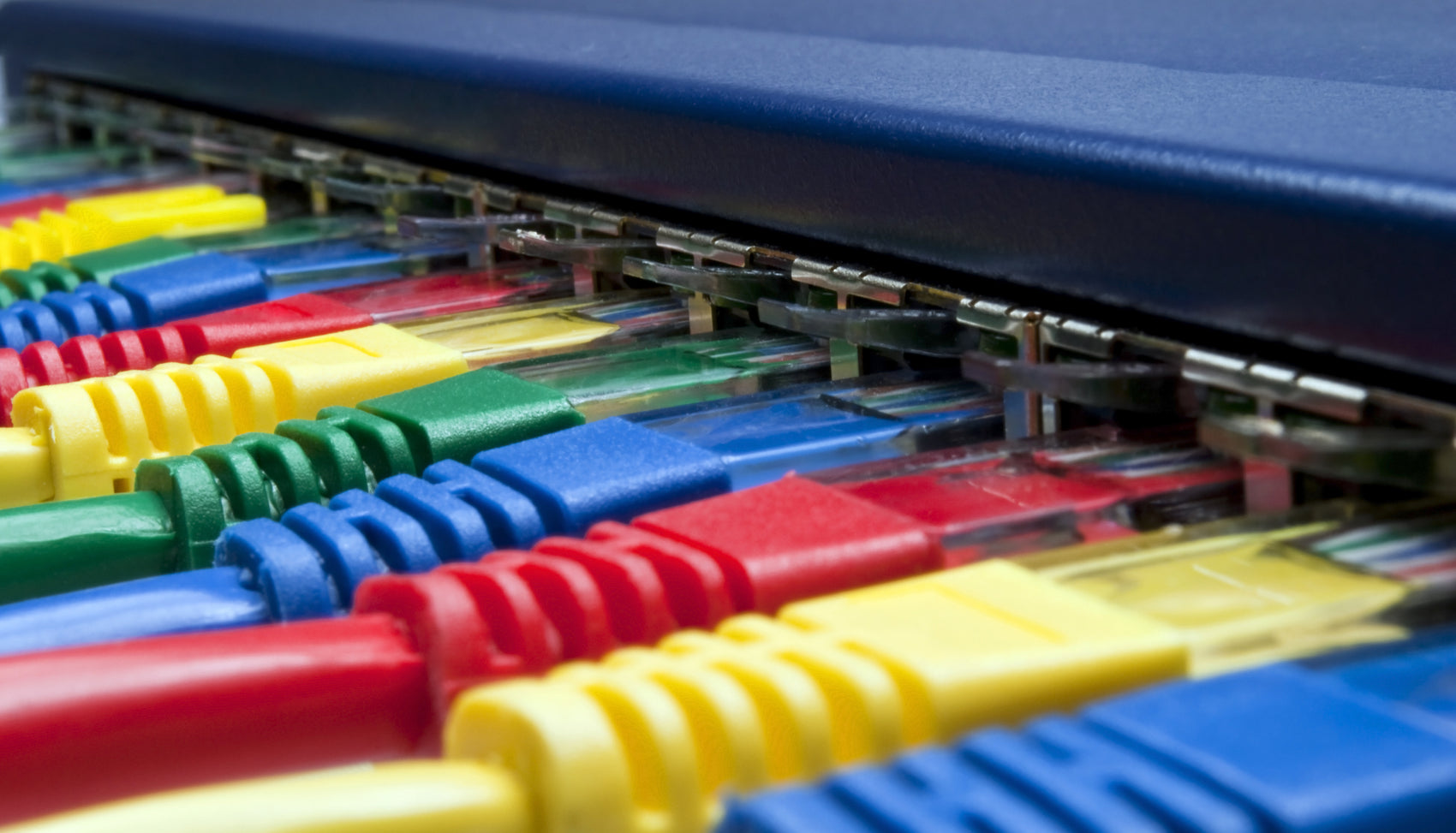There are a few different "categories" of Ethernet cable available today. Each one has different capabilities, but the most important is the supported transmission speed. The table below summarizes the differences between the current standards.
| Cable Category | Maximum Length | Transmission Speed |
|---|---|---|
| Cat 5 | 100 Meters | 0.1 Gbps |
| Cat 5e | 100 Meters | 1 Gbps |
| Cat 6 | 100 Meters | 1 Gbps |
| Cat 6A | 100 Meters | 10 Gbps |
| Cat 7 | 100 Meters | 10 Gbps |
| Cat 8 | 30 Meters | 40 Gbps |
All categories of cables are available today (except Cat 5), so the big debate is about what type or "category" of cable to use to give the best performance. It's not an easy decision, so we have outlined the differences below:
Cat 5
We are only mentioning this type for historical purposes; the maximum transmission speed was only 100 Mbps. Outstanding performance in 1995, now not so much.
Cat 5 cable is no longer produced, mainly due to its lack of performance, being superseded by the Cat 5e standard.
Cat 5e
Today, this is one of the most widely used standards. Cat 5e cable is capable of performing up to 350 Mhz and capable of speeds up to 1 Gbps.
The "e" stands for enhanced; the "enhancement" is due to a better design that significantly reduces crosstalk over the older Cat 5 standard.
As you can see the answer to one of the most asked questions is YES Cat 5e is capable of 1 Gbps networking!
Cat 6
The Cat 6 standard gives higher performance than Cat 5e. Cat 6 can perform up to 550 Mhz, and is also designed for 1 Gbps networking.
So, this is where there is a large amount of debate, if both the Cat 5e and Cat 6 standards are designed to support the same speed then what's the real difference? As we just mentioned, the Cat 6 standard supports higher frequencies, and this means that it can provide that Gigabit speed more reliably and efficiently.
What does that mean? If you had a 100-meter run of both Cat 5e and Cat 6 in the same environment, the chances are that the Cat 6 cable run would run at 1 Gbps more consistently. It is for this reason that it is recommended to use Cat 6, it is more "future proof" than using Cat 5e.
Cat 6A
This standard is the next evolution of the Cat 6 type described above. The "A" is for augmented (no, there was not a Cat 6e standard). Cat 6A has a significant performance increase over Cat 6, designed for 10 Gbps networking.
There is not an increase in supported frequency (Mhz), but the construction of the cable significantly reduces cross talk of all types allowing much larger bandwidth.
Cat 6A is still a copper, twisted pair cable using RJ45 connectors, so yes you can use it in your home network, but that would be a costly decision. Even today, there are not that many 10 Gbps interfaces for home devices.
Cat 7
The Cat 7 standard has even stricter specifications than Cat 6A and unlike all the previous categories does not come in an unshielded variant.
Cat 7 supports 10 Gbps networking just like Cat 6A but is seen to produce more reliable results, mainly due to its double-shielded construction.
Additionally, this standard wasn't recognized by the TIA/EIA organizations.
Cat 8
Cat 8 is for data center applications, primarily designed to interconnect switches, servers, blade chassis, etc. The standard has two classes:
- Class I (Cat 8.1) - Meant to be used with 8P8C RJ45 connectors
- Class II (Cat 8.2) - Meant to be used with Tera or GG45 connectors
The advantage of using copper over fiber in the cases mentioned above is that copper devices are more energy-efficient than their fiber counterparts. A definite advantage for data center providers seeking power and cooling savings.
Time to decide!
As you can see the decision on what cable type to use is not that black and white. Loosely speaking Cat 5e and Cat 6 are standards for home networking, anything above is for business and enterprise. Only you can decide, but take into account:
- How much do you want to/can you spend
- Am I going to be running near the maximum speed regularly
- Does the environment have noisy electrical sources
- How long will the cables be installed for (future-proofing)

